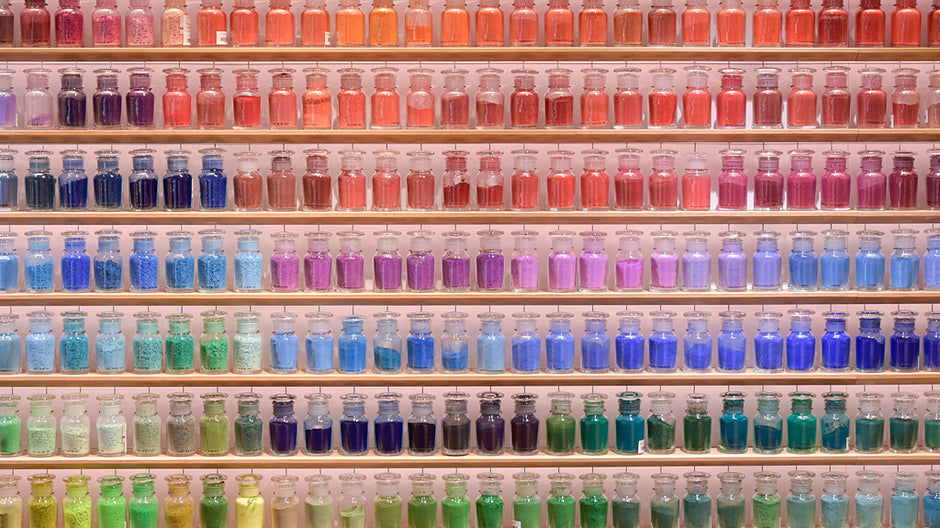This will be the last article from the series of “The types and features of 4500 colors of pigments”, which we have been receiving good reviews.
This time, let’s discuss the pigments familiar to us.
The pigments have an important role which is necessary in our daily life.
Let’s ask Chief Iwaizumi about it.
- We’ve discussed mineral pigments starting from vol.1 to vol.3.What are the differences between mineral pigments and the pigments display on the back of the store?
I have mentioned that Shin-iwa pigments are synthetic in the previous article vol.3. However, these pigments are more synthesized.

-I see. Does it mean that these pigments are not made from gound stones?
No, it’s not. The pigments were produced by oxidization with other substances aside from metals, and chemical change of dyestuff.
Therefore, the particle size is smaller and saturation is higher than mineral pigments. Pigments are used for various items around our life, such as paint tube, plastic items, cell-phone body, and top coat for vehicles. Their usage is unlimited.

- So, does all of the pigments were made after the science technology developed?
Not really. The color of Vermillion (shu) in oil painting, is an inorganic pigment that has been used since ancient times. Moreover, the color of red lead made from lead was used in Japanese Painting. As the time flows, Berlin blue (Bero-Ai) was used during the time of Jyakuchu and Hokusai's rise. These pigments were imported from oversea.
-I didn't know that.
That's why we cannot say that every traditional painting uses natural mineral pigments, or the paintings after the industrial revolution uses pigments.
In regards to Berlin blue, it's often introduced as a different name "Hokusai Blue" though it was originally named because it was imported from Berlin.
Therefore, people have been drawing by using both mineral pigments and pigments since the old days. The pigments which we call "Prussian Blue" suit Japanese painting well, so there are many artists who use that color.

-Prussian blue with animal glue? Speaking from the experience of oil painting, I can hardly imagine this combination.
There is an episode that Ernest Francisco Fenollosa, who was a leading actor of the establishment of Tokyo University of the Arts, suggested to Hougai Kanou, "Why don't you paint on silk by using western pigments?". As this episode explains, the various expressions are available even if use silk as a base.

-Lastly, please tell us about these glittering pigments.
These are called “Effect pigments” which change the color or effect by the light. You may think these pigments are unfamiliar with our life, however, these pigments are used for coating cars and makeup tools as well.

-Does it mean these effect pigments are relatively new?
No, it is not. Effect pigments have the oldest history in Japanese painting. Also, it's no exaggeration to say that they have developed in various ways.
The reason why is they are Mica-based which are used for glittering part of the illustrated handscrolls (Emakimono).
Mica powder has been ground and processed from natural mineral mica.

-Never knew that effect pigments have this long history!
Yes, we cannot distinguish whether it is traditional or new by judging from the categories of mineral pigments or pigments.
In the case of Art history, it is often discussed from the view of West or East. However, when we overlook scientifically, the more we go back the time, the more similar the base materials they used.
This is a raw ore of Mica. Ground Mica is popular as an industrial material.


